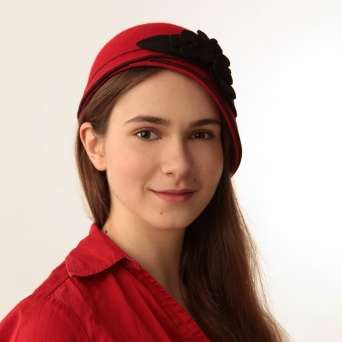The first strange thing you’ll notice about director Eike Gramss’ Falstaff at the Bayerische Staatsoper: Windsor is apparently in Scotland. The Scottish setting seems to have been chosen solely to give costumer Gottfried Pilz the chance to run wild. It’s hard to decide who wears more tasteless outfits: Mistress Quickly, with her brightly-coloured kilts and matching dyed hair, fur shawls, and leather boots, or Nannetta, in triple denim. Alice and Meg’s always-identical tartan outfits are also cringe-worthy. At least the costumes add a little excitement to the very plain set: other than a rotating platform, a curtain, and the occasional chair or screen, the stage is usually bare.
There are some cute bits of more elaborate staging. The clothes-lines in the second scene provide fun opportunities for Fenton and Nannetta to hide. And it’s kitschy but hilarious when a body double for Falstaff drops from above to swim with fish after Falstaff is dumped in the river. But other staging choices backfire. In Act III, the scrim stays down for a large portion of the action, including Nannetta’s aria. Not being able to see the singers’ facial expressions makes scenes significantly less exciting and is not worth the few cool projected images that the scrim enables.
That’s especially true because these singers have facial expressions worth seeing, as well as voices worth hearing. Fenton (Antonio Poli) and Nannetta (Ekaterina Siurina) cuddled with and teased each other like the lovesick teens they are. Mr Poli’s energetic, strong tenor left me wishing Fenton has more to sing in the opera! Ms Siurina sang lovely floated notes during her repeated “…come fa la luna”, though a harsh edge sometimes crept into her sound during her Act III aria. As her father Ford, George Petean showed off a rich baritone and played the absurdly jealous husband to perfection during his aria “È sogno? o realtà?”.
Mistress Quickly (Susanne Resmark) had the biggest personality among the women, gleefully playing the go-between and setting the trap for Falstaff (while flirting a little, just for fun). Her lovely dark vocal tone (and crazy costumes) made her stand out, even though she had relatively little to sing. Alice Ford was the talkative one, and Véronique Gens sparkled as usual, scheming and scolding in dulcet tones. As her gorgeous, lower-voiced friend (and, apparently, sartorial twin) Meg Page, Gaëlle Arquez sang her parts with the pure, light tone of the quintessential young lyric Zwischenfach.
While everyone sounded good alone, the ensembles were the musical highlights of the show. Particularly in the second scene, when the four women and the five men formed circles and plotted together, the singers’ layered voices blended beautifully to create one full, textured sound.
Of course, the star of Falstaff is Falstaff himself. Ambrogio Maestri has sung the role for years, in dozens of major opera houses and it shows. He has the rare gift of making singing seem like talking, keeping extended musical lines smooth, but making his emphases and gestures as natural and varied as any prose actor. He has the figure and personality for the role, too, dominating the stage with both his physical presence and his air of unshakeable self-assurance. All of those talents were on display on Friday night.
Asher Fisch led the Bayerische Staatsorchester in an impossibly precise performance of Verdi’s music. Not a note was out of place. Dynamics ranged from whisper-soft to invigoratingly brash, while the sections of the orchestra kept perfect balance with both each other and the singers. The chorus, directed by Sören Eckhoff, also sounded great, especially during the “pizzica, pizzica” final scene. But I’m not sure why they sported costumes and choreography more suited to a 1920s risqué fancy dress ball than to the recreation of a scary forest legend.
Overall, this Falstaff is musically excellent. The staging, though, is a mixed bag, with flashes of cleverness but no overarching vision.




